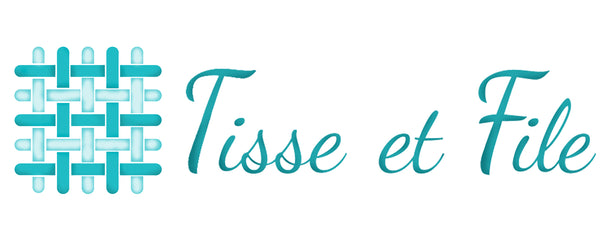
Linen: An Eco-Friendly and Versatile Fiber for Weaving and Sewing
Linen is one of the most durable and sought-after natural fibers by weavers and textile makers. Discover its unique properties, ecological benefits, and how to use it in your weaving and sewing projects.
Origin and Production of Linen
Linen is undoubtedly one of the most eco-friendly fibers on the textile market. It requires little water, minimal fertilizers, and almost no pesticides, making it an exemplary sustainable crop. Its production is mainly concentrated in Western Europe, particularly in France and Belgium, where the climate is ideal.
After 100 days of growth, the plant is uprooted (rather than cut) to extract fibers from both the stem and roots. The transformation process includes several key steps: retting, scutching, and combing. These processes yield two types of fibers:
- Long fibers, water-spun to create a fine and smooth yarn.
- Short fibers, dry-spun to produce thicker, more textured yarns.

Why Do Weavers Love Linen Yarn?
Linen yarn is highly valued for its strength and versatility. It performs equally well in both warp and weft and adapts to various weaving styles.
The Benefits of Linen Fabric
- Natural comfort: Linen regulates temperature beautifully. It stays cool in summer and insulates in winter.
- Softens over time: Linen becomes increasingly soft and supple with each wash, gaining character and charm.
- Highly resistant: This strong fiber does not stretch, pill, or lose its shape, even with frequent use.
- Eco-friendly durability: Linen is water-resistant, durable, and perfect for long-lasting creations.
Linen Project Ideas
Here are a few ideas to incorporate linen into your handmade projects:
- Home textiles: tablecloths, napkins, kitchen towels.
- Interior decor: curtains, cushions, table runners.
- Accessories and garments: scarves, bags, lightweight tunics.
Linen: An Eco-Conscious and Artisanal Choice
Whether you’re a weaver, seamstress, or textile artist, linen is a noble fiber that blends beauty with environmental responsibility.
➡️ Discover our selection of linen yarns available at Tisse et File!
Did you know?
- France is the world’s leading producer of flax for textile use.
- Linen has been cultivated since ancient times for its fibers and seeds.
- It requires up to 5 times less water than cotton to grow.
Useful Links
👉 Explore more articles about natural fibers
👉 See our weaving linen yarns here
Ready to create with linen? Check out our Linen collection
